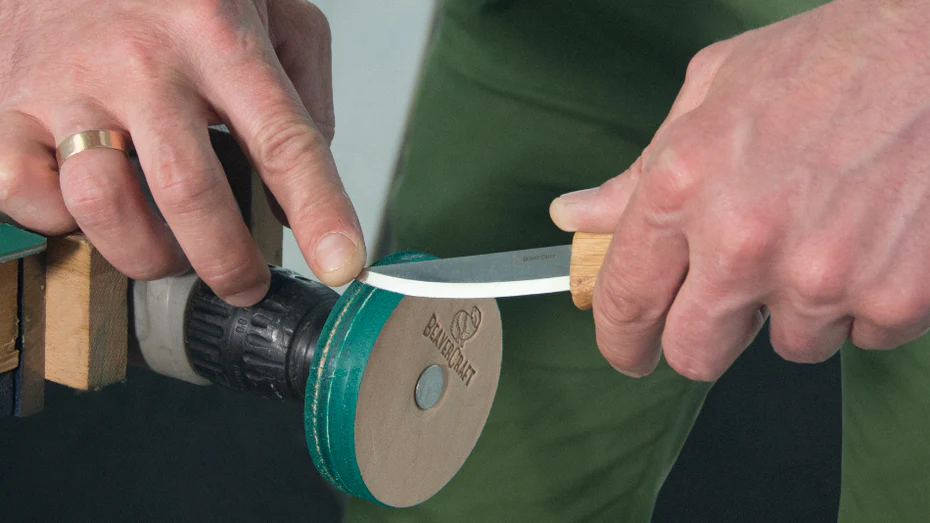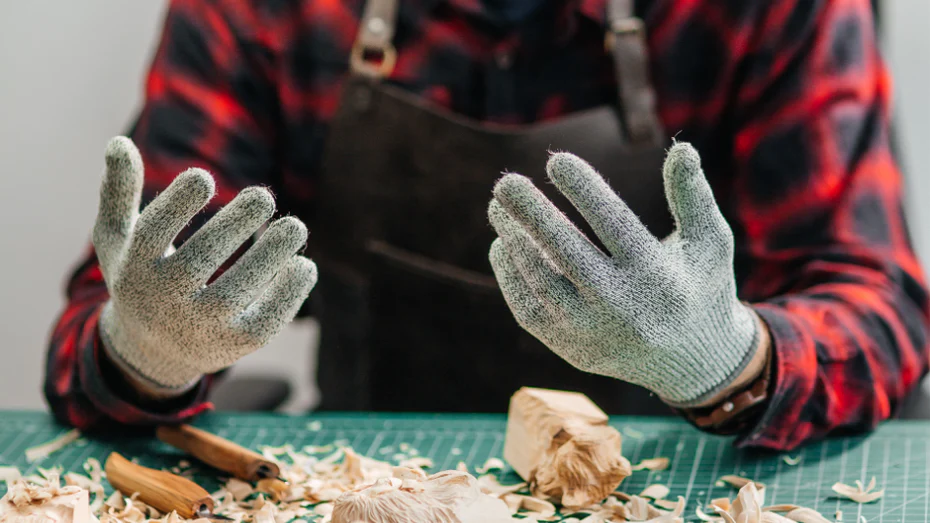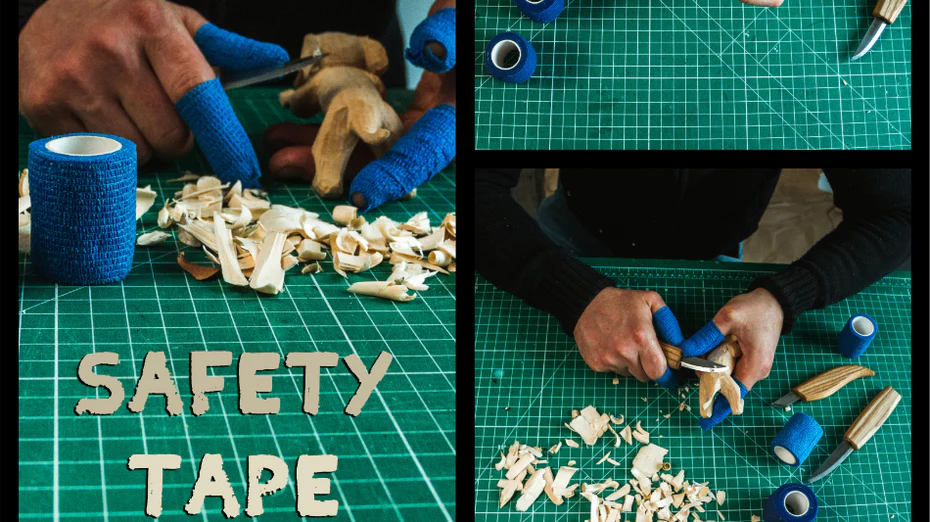Wood Carving Safety: How to Fight Cutting Monster? | BC Series #0

Embarking on the intricate journey of wood carving unveils a realm of artistic possibilities, but as a novice, it's crucial to navigate this craft with safety as a top priority. In this extensive guide, we will explore key safety considerations for wood carving enthusiasts, focusing on the nuanced aspects of proper tool handling, the necessity of protective equipment, and the importance of cultivating a secure work area.
Proper Tool Handling
The very essence of wood carving lies in the mastery of tool handling. Your carving tools are not just instruments; they are extensions of your creativity, demanding a keen understanding of their individual characteristics and applications.
Use The Right Tools
Begin your wood carving journey by meticulously selecting the right tools for your projects. A fundamental set should be your starting point, and as your skills progress, you can gradually diversify your toolkit. Appreciate the uniqueness of each tool, aligning its purpose with the demands of your carving objectives. More information about the right tools you can read in our article «Wood Carving Tools Your Toolkit Should Have»
Consider the wood's nature, whether soft or hard, and the intricacy of your envisioned design. The choice of tools should reflect these variables, ensuring a harmonious blend of efficiency and safety in your carving endeavors.
Sharpen Wood Carving Tools

Sharp tools not only elevate your carving precision but also play a pivotal role in ensuring safety. Dull blades pose a heightened risk of slips and accidents, emphasizing the importance of regular tool sharpening. Invest in a quality sharpening kit and acquaint yourself with various techniques to maintain a razor-sharp edge on your tools. Don't miss the chance to read our detailed guide «How to Sharpen Wood Carving Knives: Completed Sharpening Wood Carving Tools Guide»
View the act of sharpening as a ritual, a connection with your tools that transcends maintenance. A well-honed blade not only enhances safety but also facilitates a seamless, almost therapeutic, carving experience.
Protective Equipment
Engaging with wood carving necessitates a proactive approach to personal safety through the use of proper protective equipment.
Carving Gloves

Your hands are the orchestrators of your artistic expression, and carving gloves serve as the frontline defense against potential injuries. Seek gloves crafted from cut-resistant materials, striking a balance between protection and tactile sensitivity. A snug fit ensures not only safety but also an unhindered connection between your hands and the carving process.
Thumb Protection

Delicate yet crucial, your thumbs deserve special attention during intricate carving tasks. Thumb guards act as sentinels, shielding these vital digits from inadvertent cuts and providing stability during precision work. Prioritize comfort and invest in high-quality thumb protection, an investment in both safety and sustained creativity.
Thumb guard
Many carvers use the leather thumb guards to protect their thumbs. This is just a leather pad attached to an elastic band. The leather on some guards goes over the tip of the thumb and the top is open on other guards, but there isn’t much difference in effectiveness between these two types.
Plasticized tape
Some carvers wrap cut-resistant plasticized tape around the thumb to make the custom guard. While the tape carvers use is similar to the self-adhesive tape used by veterinarians to hold bandages onto animals. Please note that the vet wrap tape is not cut resistant and should not be used as a substitute. Also, some carvers fashion their own thumb guards from duct tape or using duct tapes to reinforce leather or rubber thumb protectors.
Safe Work Area
Transforming a block of wood into a masterpiece requires a conducive and secure work environment. Let your workspace be a sanctuary where creativity flourishes without compromising safety.
Illuminate your workspace adequately to enhance visibility, reducing the likelihood of accidents. Organize your tools systematically, creating a clutter-free zone that fosters a focused and efficient carving atmosphere. Designate a specific area for carving, minimizing distractions and potential hazards that might compromise your safety and the integrity of your work.
So before you start carving always make sure in:- Tool Awareness: Be mindful of the cutting edge's location to prevent accidents during tool handling.
- Eye Protection: Guard against flying wood chips by wearing eye protection, especially with knives and chisels.
- Dust Protection: Use proper dust protection during sanding to avoid health issues related to wood toxicity.
- No Hurry: Take your time while carving; slow and controlled movements with your knife are key.
- Define Your Needs: Choose the right knife for the task, whether it's a sloyd knife, chip carving knife, detail knife, or spoon knife.
- Find the Light: Ensure well-lit workspace for better visibility and precision.
- First Make Peace: Carve with a calm mindset, avoiding carving during negative moods.
- Take Some Rest: Rest before carving, especially in fresh air, for better focus and safety.
- Always Wear Gloves: Prioritize safety by always wearing gloves, considering potential slip scenarios, and being mindful of hand placement.
By meticulously adhering to these safety measures, you are not just safeguarding yourself but also laying the foundation for a fulfilling wood carving journey. Respect your tools, prioritize safety, and allow your creativity to unfurl as you transform raw wood into bespoke works of art.


2 Comments
Thank you for sharing your journey! It’s always inspiring to hear how others discover their passion, no matter the age. Safety is definitely key in woodcarving, and we can’t stress enough the importance of protective gear. We’re glad to hear you’re committed to the craft and are taking the necessary time to heal. Keep that passion burning, and when you’re ready to get back to it, we have protective gear and tools that will help you on your journey to mastering those skills. Wishing you a speedy recovery!
Greetings, fellow enthusiasts. As a newcomer to the realm of woodcarving, I find myself at the age of 56, embarking on an unexpected journey. Despite my initial reservations and impatience, I have discovered a profound passion for this art form.
As a new comer in the field, I feel compelled to emphasize the utmost importance of safety precautions for those embarking on this path. Having personally experienced two serious injuries, I implore you to prioritize the use of protective gear at all times.
While it may be necessary for me to temporarily cease my carving activities to allow for proper healing, rest assured that I remain committed to this pursuit. I am determined to cultivate patience and refine my skills as I progress on this captivating path of woodcarving